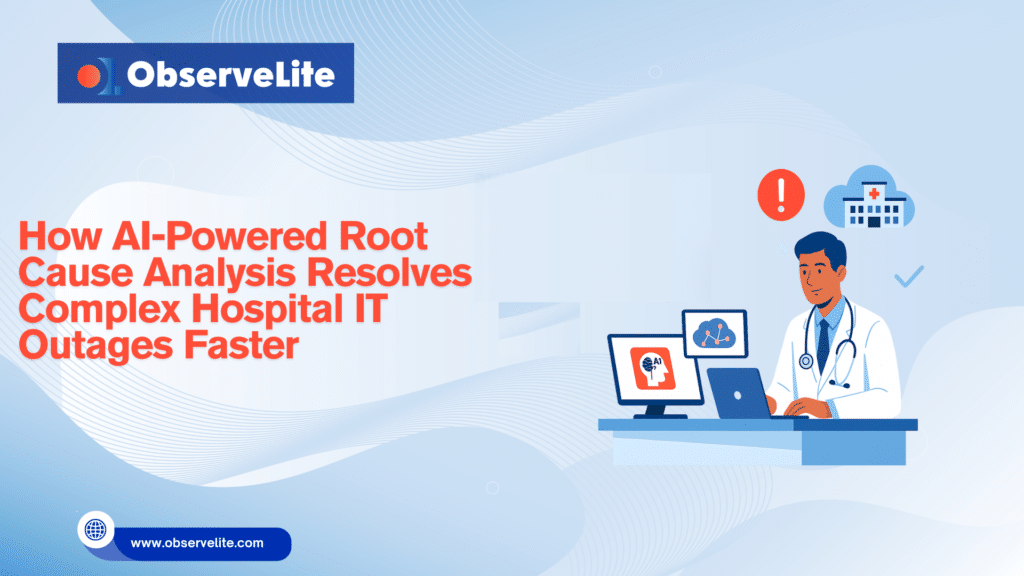When a hospital’s digital systems slow down or crash, lives—not just workflows—can be at stake. From electronic health records (EHRs) to lab systems and radiology viewers, modern care depends on seamless digital operations. The cost of even a few minutes of downtime extends beyond revenue loss—it compromises patient care, erodes clinician trust, and can cause irreversible delays in diagnosis or treatment.
Yet identifying the exact source of an issue in a complex hospital tech environment isn’t easy. Legacy systems, hybrid infrastructure, and dozens of integrated apps make it difficult to determine whether an outage started in the database, the network, the app code, or a third-party API. That’s where AI-powered root cause analysis becomes indispensable.
The Unique Complexity of Hospital IT Environments
Unlike standard enterprise setups, healthcare IT runs on a mesh of clinical, administrative, and compliance-critical systems. You have:
- Multiple EMRs and departmental apps
- PACS systems and imaging integrations
- Lab information systems
- Appointment and billing software
- IoT devices, smart beds, infusion pumps
- Hybrid infrastructure (cloud + on-prem)
This complexity introduces noise into incident detection. Manual troubleshooting doesn’t scale. And when every second matters, IT outage resolution in hospitals must be immediate and accurate.
Why AI Is Needed in Hospital Infrastructure Monitoring
Human operators can only parse so much data at once. A performance dip might trigger 50+ alerts across different dashboards. Without context, IT teams spend hours running down false leads or treating symptoms rather than the root problem.
That’s why AI in hospital infrastructure monitoring is no longer a “nice to have.” It’s essential.
AI can sift through vast telemetry data (logs, metrics, traces), correlate anomalies across systems, and identify cause-effect relationships in real time. It moves beyond thresholds and alerts—offering insight, not just noise.
ObserveLite’s OL-APE platform is a prime example. Trained on healthcare IT environments, OL-APE applies domain-aware logic to recognize clinical infrastructure patterns and proactively pinpoint where and why failures begin.
How AI-Powered Root Cause Analysis Works
At the core of AI-powered root cause analysis is behavioral intelligence. The system understands what “normal” looks like across a hospital’s tech stack—then flags deviations in context.
Here’s how it works:
- Baseline Learning
OL-APE builds dynamic performance baselines for every monitored service—from EHR modules to storage latency. - Multi-Layer Correlation
Instead of analyzing CPU or memory in isolation, it correlates anomalies across application code, cloud infra, network layers, and security logs. - Impact Mapping
If a file upload issue in the patient portal is actually caused by a downstream image rendering service, OL-APE maps that path—and explains it in plain terms. - Incident Summarization
The system produces a real-time root cause narrative: what failed, what triggered it, and what was impacted. - Proactive Remediation
Paired with automation tools, OL-APE can execute playbooks to restart services, reallocate memory, or notify the right on-call team—automatically.
This level of intelligence shortens resolution time dramatically and eliminates guesswork from incident response.
Root Cause Analysis for Healthcare IT: A Game-Changer
In healthcare, downtime isn’t just expensive—it’s dangerous. With root cause analysis for healthcare IT, hospitals gain:
- Faster recovery: Cut MTTR from hours to minutes
- Greater visibility: Know what’s happening across every layer of the tech stack
- Fewer false alerts: Focus on high-impact incidents, not noise
- Collaborative resolution: Engineers, clinical ops, and vendors see the same diagnosis
Downtime Prevention in Medical Systems: Predict Before It Breaks
One of the biggest advantages of AI-driven observability is prevention.
Downtime prevention in medical systems means catching early signals before impact:
- A memory leak in a pharmacy API
- DNS latency affecting lab report delivery
- High I/O load on a shared disk slowing patient check-in kiosks
OL-APE uses predictive analytics to surface these trends early—flagging performance degradation before clinicians feel it.
This turns reactive firefighting into proactive stability.
Smarter Healthcare IT Incident Response
In the event of a real outage, every second counts. Traditional escalation workflows move too slowly. Ticket triage wastes time. Root cause isn’t known until after recovery.
With healthcare IT incident response powered by OL-APE, hospitals get:
- Incident enrichment with contextual data
- Severity scoring based on service-level and clinical impact
- Smart routing to the right resolution team
- Continuous postmortem analysis for future prevention
It’s not just resolution. It’s learning and evolving with every event.
Why OL-APE is Built for Hospitals
Most APM tools treat healthcare like any other industry. OL-APE doesn’t.
- It understands EMR latency patterns during shift changes
- It tracks load behavior during outpatient peak hours
- It aligns incidents with clinical workflows, not just servers
This makes OL-APE uniquely qualified to deliver AI-powered root cause analysis that works in live hospitals—not just in theory.
Final Thoughts: Reliability is a Clinical Imperative
As hospitals evolve into software-driven ecosystems, resilience becomes a clinical requirement. Patients expect instant access to care. Doctors need real-time access to information. Admins can’t afford missed billing cycles or system-wide delays.
With AI-powered root cause analysis, hospitals move from fragmented monitoring to intelligent, integrated incident response. It’s not just about fixing faster—it’s about preventing smarter.
Ready to eliminate blind spots and protect your uptime?
Book a personalized demo of OL-APE to see it in action.


